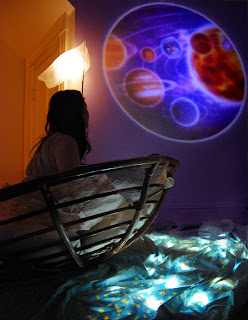(Posted in May from saved draft)
Alexia Sinclair is an Australian fine art photographer and digital artist. Her style is recognizable and her images are always visual narratives. By combining pictures from different locations around the world, Sinclair creates multilayered images of imaginary worlds that present subtle contemporary notions of beauty and fashion.
I've made it clear before that I like to be in full control of my shoots, and apparently Alexia Sinclair does as well. "Motivated by her love and devotion for all things intricate and unusual,...[Sinclair] approaches her creative production by filling all of the roles, from designing sets and props, to makeup and costumes." (http://alexissinclair.com/biography)
Agrippina - The Poisoness (AD 15-59), The Regal Twelve Series. Alexia Sinclair, 2007. 25x25 inches.http://alexiasinclair.com/the-regal-twelve.
It's Alexia Sinclair’s The Regal Twelve series that I'm particularly interested in. She has combined hundreds of photographic elements and illustrations to create these pieces in recognition of twelve female European monarchs from over a 2,000 year span. Sinclair studied portraiture styles and the history of each of these varying rulers to stitch together certain elements and icons in order to present their story within each piece.
Isabella of Spain - The Catholic (1451 – 1504), The Regal Twelve Series. Alexia Sinclair, 2007. 25x25 inches. http://alexiasinclair.com/the-regal-twelve.
What I really like about The Regal Twelve is that it's a diverse series that recognizes the famous, the infamous and the unrecognized. It says on her website that Sinclair chose these twelve based on their leadership differences, on their "flamboyancies" and on their lasting influences on society. The article goes on to say that by "exploring the complexities of each ruler, The Regal Twelve celebrates historical realities within the guise of contemporary fantasy, a kind of conversation between the past and present."
I'm interested in what she does in post production. I'm trying to perfect my Photoshop skills and this is certainly what I try for. I love her imagery and narrative tone, of course. This was a great artist to stumble upon!
Christina of Sweden - The Androgynous Queen (1626 - 1689), The Regal Twelve Series. Alexia Sinclair, 2007. 25x25 inches. http://alexiasinclair.com/the-regal-twelve.
























